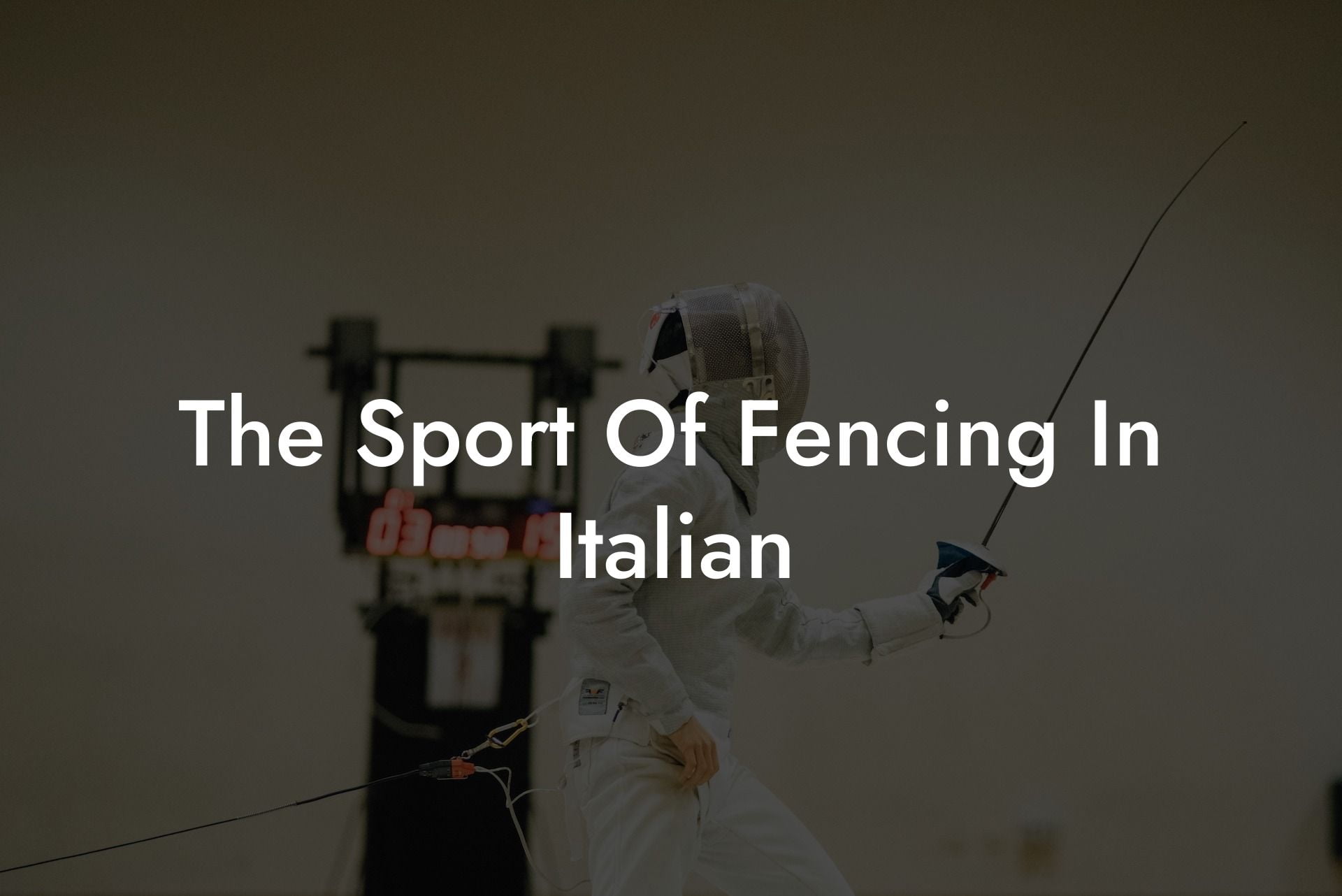Get ready to embark on a thrilling journey through the beautiful world of Italian fencing! From its historical roots to present-day techniques, we'll delve deep into the fascinating aspects of the sport and discover what makes Italian fencing stand out from the rest. So, gear up and join us as we explore the rich tradition and exciting elegance of fencing in Italian style.
The Sport Of Fencing In Italian Table of Contents
The Historical Roots of Italian Fencing
The Historical Roots of Italian Fencing
Italian fencing traces its roots back to the 15th century, during the Renaissance era. The sport of fencing flourished across the Italian cities, where a number of fencing masters were emerging to impart their wisdom and skills to aspiring swordsmen. The first known treatise on the subject, "Flos Duellatorum," was written by Fiore dei Liberi in 1410.
Distinct Techniques and Styles in Italian Fencing
In Italian fencing, there are several distinct techniques and styles. Some of the most notable styles include:
- Classical Italian Fencing: This style emphasizes fluidity, elegance, and precision. Classical Italian fencing is characterized by its lunge-driven offense, a strong core, and an extended arm when attacking. This style is often associated with the Italian saying, "In time, not in line."
- Historical Italian Fencing: This style focuses on historical techniques and practices, particularly those from the Renaissance era. It often includes the use of various historical weapons, such as the rapier, the side sword, and the sabre.
- Modern Italian Fencing: This style combines the elements of both Classical and Historical styles to create a more dynamic and contemporary approach to fencing. Modern Italian fencing incorporates new techniques and tactics, including the use of feints and counter attacks.
Significance of the Italian Grip
The Italian grip is a unique aspect of Italian fencing, characterized by its straight quillon and a finger rest that separates the thumb and index finger. This grip allows for greater control and precision, enabling its users to execute a variety of techniques with ease.
Notable Italian Fencers
Throughout the years, Italy has produced several talented fencers who have made their mark on the international stage. Among these, some notable names include:
- Edoardo Mangiarotti - One of the most decorated fencers in history, with 13 Olympic medals and 27 World Championship medals. Mangiarotti was an expert in both the épée and the foil.
- Valentina Vezzali - A six-time Olympic gold medalist and seven-time World Champion, she is considered one of the greatest female fencers of all time.
- Aldo Nadi - A skilled fencer and a renowned fencing master, Nadi won three Olympic gold medals in 1920 and three silvers in 1924. He is also the author of several influential books on fencing.
The Sport Of Fencing In Italian Example:
Imagine yourself in an elegant Italian fencing hall, clad in fencing gear and gripping an épée with the distinctive Italian grip. You face off against your opponent, who also wields an épée, and begin to engage in a dance of steel. Your footwork is graceful and precise, mirroring the fluid movements passed down through generations of Italian fencing masters. You lunge forward, extending your arm, aiming for your opponent's chest with the perfect combination of speed, accuracy, and control. As you retreat and prepare for the next exchange, you embody the true spirit and elegance of Italian fencing.
Now that you've taken a closer look at the unique features and captivating history of Italian fencing, it's time to explore the world of fencing even further! We hope you've gained a newfound appreciation for the artistry and skill required to excel in this fascinating sport. Don't forget to share this enlightening guide with fellow fencing enthusiasts and continue your fencing journey by exploring more insightful articles on Anchorage Fencing Club's blog. Prepare to immerse yourself in the wonderful world of fencing!













